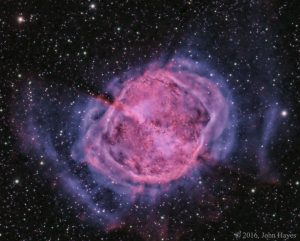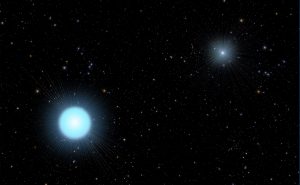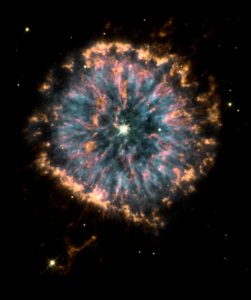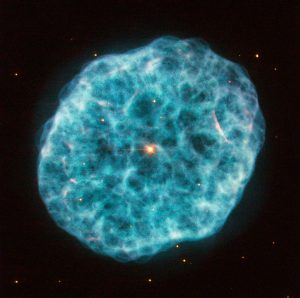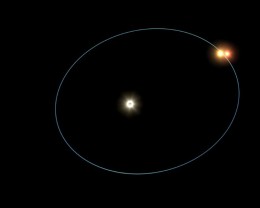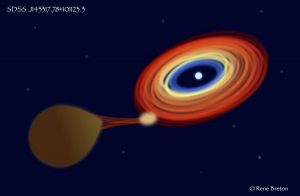nana bianca
M27: La Nebulosa Manubrio
Il primo indizio di ciò che diventerà il nostro Sole è stato scoperto involontariamente nel 1764. A quel tempo Charles Messier stava compilando una lista di oggetti diffusi che non dovevano essere confusi con comete. L’oggetto numero 27 di questo catalogo, oggi noto come Messier 27 o Nebulosa Manubrio (Dumbbell Nebula), è una nebulosa planetaria, il tipo di nebulosa che il nostro Sole produrrà una volta che avrà esaurito l’idrogeno necessario alla fusione nucleare nel suo nucleo. Continua a leggere
Un misterioso sistema binario
Un recente studio ha esaminato come possa essersi formato il misterioso sistema binario HS 2220+2146, costituito da due nane bianche in orbita una attorno all’altra. Potrebbe trattarsi di un esempio per una nuova ipotesi sul percorso evolutivo dei sistemi binari di nane bianche. Continua a leggere
L’occhio ardente di NGC 6751
Questa immagine ripresa dal telescopio Hubble dimostra lo straordinario spettacolo offerto dalle nebulose planetarie. Questa in particolare, chiamata NGC 6751, è simile ad un gigantesco occhio infuocato. Si tratta di una nube di gas espulso diverse migliaia di anni fa dalla calda stella visibile nel centro. Continua a leggere
Una perla preziosa in NGC 1501
Questa immagine del telescopio Hubble mostra NGC 1501: soprannominata in modo appropriato Nebulosa Ostrica, si trova a circa 5000 anni luce di distanza dalla Terra, nella costellazione della Giraffa. Continua a leggere
Un sistema binario molto particolare
Un recente studio ha esaminato come possa essersi formato il misterioso sistema binario HS 2220+2146, costituito da due nane bianche in orbita una attorno all’altra. Potrebbe trattarsi di un esempio per una nuova ipotesi sul percorso evolutivo dei sistemi binari di nane bianche. Continua a leggere
Momenti di gloria
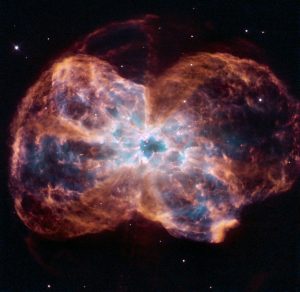
Questa immagine, uno degli innumerevoli gioielli cosmici ripresi dal telescopio Hubble, mostra l’ultimo, colorato momento di gloria di una stella simile al Sole. Continua a leggere
Bracci di spirale per una planetaria
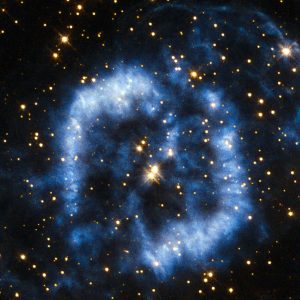
I due bracci di spirale che si dispiegano dal centro di questa spettacolare immagine potrebbero far pensare ad una galassia. Ma questo oggetto è di natura diversa: PK 329-02.2 è una nebulosa planetaria all’interno della Via Lattea. Questo che osserviamo è l’ultimo respiro di una stella morente. Continua a leggere
Schegge stellari
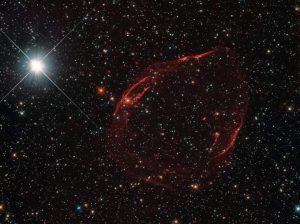
Diverse migliaia di anni fa è esplosa una stella a circa 160.000 anni luce di distanza da noi, spargendo schegge stellari attraverso il cielo. Le conseguenze di questa energetica detonazione sono evidenti in questa suggestiva immagine del telescopio Hubble. Continua a leggere
Viaggio cosmico di una nebulosa a forma di farfalla
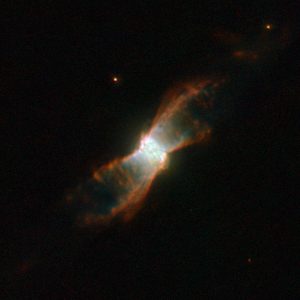
Il telescopio Hubble ha immortalato un’affascinante nebulosa planetaria, simile ad una delicata farfalla, denominata NGC 6881.
Situata nella costellazione del Cigno, è formata da una nube interna, che si estende per circa un quinto di anno luce, e da “ali” simmetriche che si espandono per circa un anno luce da un’estremità all’altra. La simmetria potrebbe essere dovuta ad una stella binaria nel centro della nebulosa. Continua a leggere
Cannibalismo Stellare
Gli astronomi hanno rilevato un oggetto sub-stellare che era una stella, ma è stato consumato dalla sua compagna nana bianca. Un team internazionale di astronomi ha fatto la scoperta osservando un sistema binario molto debole, J1433 che si trova a 730 anni luce di distanza.
